When you are passionate about fishkeeping, you always want to try something new. You want your tank to look perfect, your plants healthier than ever, and your fish the center of attention.
There are, of course, some animals more interesting than others that can bring life to your tank. The dwarf crayfish are quite attractive and, unlike other species of crayfish,they can share a tank with other fish without attacking or disturbing since they will spend most of their time on the bottom of the tank.
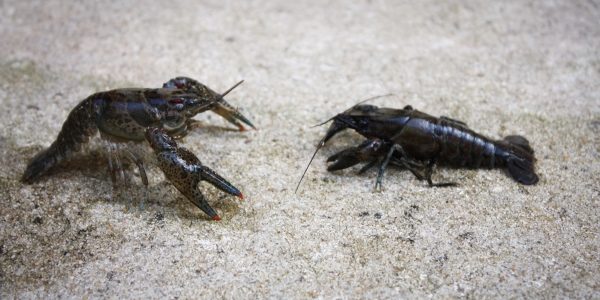
Dwarf crayfish can live in small tanks, which is an advantageous for many aquarists. Other species of crayfish can mature to a large size crowding even a medium tank. However, dwarf crayfish can grow up to 1.5 inches long when mature with a lifespan of up to three years.
These creatures look like small lobsters with a grayish color with brown or darker stripes though they do have other shades. When young, they are completely clear and acquire their color as they mature. They do not have special requirements regarding the tank you will keep them in, but you have to make sure there are enough hiding spaces for everyone, especially if you have multiple fish in the tank since the crayfish might feel disturbed by all the activity in the tank and will search for a place to hide.
Table of Contents
Dwarf Crayfish: Overview
| Information Chart | Dwarf Crayfish |
| Scientific Name: | Cambarellus patzcuarensis |
| Family: | Cambaridae |
| Care Level: | Moderate difficulty |
| Temperament: | Peaceful |
| Color: | Orange |
| Lifespan: | 2-3 years |
| Size: | ~2 inches (5 cm) |
| Diet: | Omnivore |
| Minimum Tank Size | 5 gallons (10 is better) |
| Temperature: | Kee60° – 75° F (16° – 24° C) |
| Water
Conditions: |
6.5-8.0 pH and Moderately Hard to Very Hard |
| Tank Mate Compatibility | Keep away from large fishes; like crayfish |
Dwarf Crayfish: Appearance
The dwarf crayfish is compared to a “miniaturized lobster” in appearance because of its diminutive size. This creature resembles a little lobster due to its claws and a muscular tail for swimming.
The Mexican Dwarf Crayfish is recognized by its vibrant orange color, sometimes tinted with scarlet tones in a shared aquarium environment. On the top of their bodies, they have darker orange stripes and dots that contrast with those lighter orange lines and lighter colored dots on the bottom of their bodies.
The most common colors in these crayfishes are bright orange and Brilliant blue. And brown and gray stripes and dots are found in other species. The orange crayfishes are Mexican dwarf crayfish, and the ones in a brilliant blue are Blue Brazos Mexican dwarf crayfish. The bright orange Mexican dwarf crayfish, brilliant blue Blue Brazos Mexican dwarf crayfish.
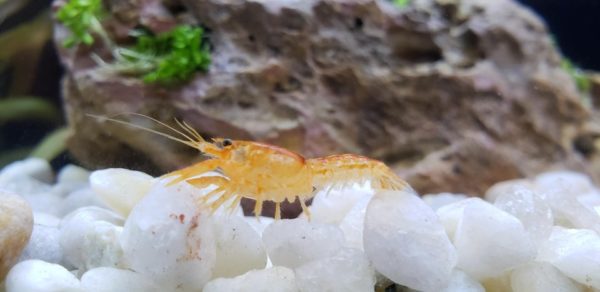
As a result of their bright colors, Mexican dwarf crayfish are less likely to maintain their vibrant appearance in the wild since they are more noticeable to predators. Despite their small size, dwarf crayfish are pretty standard, with most species’ adults growing up to less than 2 inches in length.
The lifespan of Dwarf Crayfish
According to experts, the typical lifespan of a Dwarf Crayfish is 2-3 years on average. Providing a high-quality environment is necessary to enhance their chances of living the longest possible life, as described in the preceding subsection. You should make sure that the aquarium water meets all of the appropriate specifications and that they have a choice of habitat enhancements accessible to them.
Dwarf Crayfish Size
The typical Dwarf Crayfish typically grow up to 2 inches. A hard shell encases their bodies, and a longer tail enables them to swim pretty efficiently. When you realize that they have 19 pairs of limbs that cover the breadth of their 2-inch body, it’s easy to see why they molt so often. The Mexican Dwarf Crayfish is a crayfish with just four legs, and it is found in Mexico.
Natural Habitat And Origin Of Dwarf Crayfish
Dwarf crayfish are found mainly in Mexico and the southwestern United States. Lakes, minor streams, and slow-moving rivers make up most of their natural habitat.
Even though these Mexican dwarf crayfish are not susceptible to Ich or white spot sickness, they may easily be accessible to crayfish plague and stress, both of which may be lethal if not treated immediately after the occurrence. Because the illness does not develop on its own in tanks, but due to the water mold plague.
However, it only happens when you introduce a crayfish that has already been afflicted with the mold. Therefore, wild crayfish should not be brought into a tank until proven that they are not infected with any diseases.
Dwarf Crayfish Care & Tank Set-Up
Like many other species of crayfish, the dwarf crayfish is not demanding to care for, but they can not survive in high levels of nitrites and ammonia. It is not recommended to try to cycle your tank with them nor to bring a new filter into their tank. As long as you kept the filter in a cycled tank for a few weeks, the strength of the filter will not matter. The dwarf crayfish will usually eat most of the food it is given,thus,heavy filtration is not needed. In addition, a strong filter might disturb them, as they are usually calm creatures.
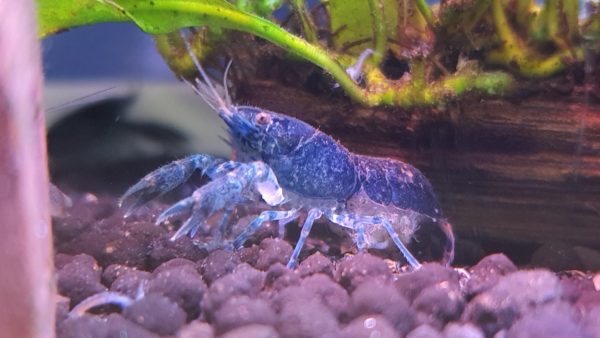
Many people keep these creatures in their tanks to eat remaining food left from the fish, which will result in the water remaining cleaner for a longer time. If fed separately, they will enjoy frozen worms or mosquito larvae considering they are omnivores. If these foods are difficult to find in your per store, they also eat peas and several other vegetables you can find around the house and they will consume fish food as well.
This species of crayfish might entertain you more than some dwarf shrimp if they don’t have other fish in the tank. They jump when they come across each other and defend their territory when you get close to the tank.
Dwarf Crayfish Tank Size And Specifications
It should go without saying that giving your crayfish an adequately sized tank with simple filtration and appropriate water conditions can be critical to their long-term health and survival. Even the toughest of fish may become susceptible to disease if they are exposed to bad water conditions over their lifetime.
Optimum Tank Size For Dwarf Crayfish
The recommended tank size for dwarf crayfish is a 5-gallon aquarium since they are not fussy about their home. However, if you want to keep more than two or three of them in a single aquarium, a tank of 20 gallons (91 liters) in length should be regarded as the absolute minimum.
Tank Shape For Dwarf Crayfish
You should consider investing in a high-quality water testing kit to guarantee that all water conditions are maintained and fall within the prescribed range. This will aid you with keeping appropriate settings as well as identifying any variations so that they may be rectified as soon as possible. The availability of a water testing kit is essential for anyone interested in getting into the hobby of actual fish keeping!
Tank Capacity For Dwarf Crayfish
Any aquarium design that will house dwarf crayfish should have a significant number of hiding places. During their annual molt, crayfish need a secure sanctuary until their shell hardens again, which might take many months. Because they are susceptible to being eaten by the other crayfish and fish in their tank while their bodies are still soft, be sure to provide them with hiding places if you don’t want them to be eaten.
How Many Dwarf Crayfish Are In A 5-Gallon Tank
As you know, these crayfish are relatively small compared to their larger counterparts. Crayfish do not need an excessively colossal tank, and thus they can be maintained and placed anywhere in your house without being noticed. However, the fish should freely move about the tank without feeling like they are being held captive, so make sure that this is the case.
Water Parameters for Dwarf Crayfish
If you only have a few of them and want to breed them, you may end up with hundreds of babies. As a matter of fact, as long as you maintain the water in the tank at the right temperature (around 64 degrees Fahrenheit) and you feed them often enough, they will breed. The females keep their eggs under their tail, which will hatch after three or four weeks; the warmer the water, the faster they will hatch.
The beautiful thing about dwarf crayfish care is that they can survive in a broad range of different settings and conditions. It seems that they do not have many preferences.
You must, of course, keep the water within the imposed regulation boundaries. As long as you don’t overlook the care of your garden’s water supply, you will face no issue keeping these critters happy.
Dwarf Crayfish, as previously said, are often found in small lakes and slow-moving rivers across Mexico and the southern United States, as well as the Caribbean and the Mediterranean. They like warmer water, making them a perfect addition to tropical aquariums since they thrive on it.
Dwarf Crayfish Tank Landscape
Maintaining Dwarf Crayfish isn’t a challenging task for most aquarists because of their hardiness and adaptability. They are very adaptive and will significantly contribute to the general health of your tank’s ecosystem.
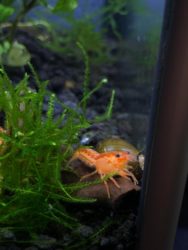
To extend or improve their life, make sure that they are not stressed. At the time of molting, when animals are in pain and already stressed out by the process, this is very important to remember. One thing you can do to help them is to make sure that the water is of excellent quality.
Feeding Dwarf Crayfish
Best Diet for Dwarf Crayfish
Mexican dwarf crayfish are omnivores, meaning they will devour just about anything that they can get their claws on, including other crayfish. In the home aquarium, they should be fed regularly with a high-quality sinking pellet, as well as fresh or frozen fruits and vegetables.
They’re said to be “tank janitors” as they’re superb algae eaters who will also devour leftover fish food if given a chance.
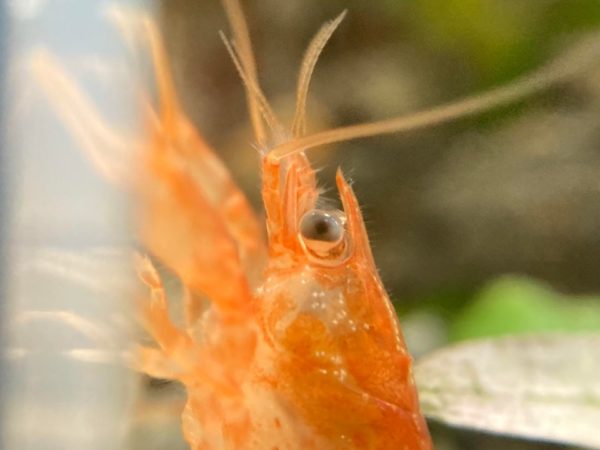
You should only select bottom-dwelling live food when choosing their live food. This may include worms like blackworms, brine shrimp, Gammarus, earthworms, and snails. Crayfish benefit a lot from the regular addition of vegetable matter to their diet, and shelled peas, zucchini, and cucumber medallions are preferred vegetable selections. It is highly advised to put vegetables cleaned entirely and blanched before putting them in an aquarium. They may also accept dried aquarium plant cuttings and leaves, but doing so could swiftly poison your aquarium if you are not careful with your selections.
How Often Should You Feed Dwarf Crayfish?
A lousy diet and poor water quality affect crayfish, just as they do the rest of the planet and any other fish or invertebrate. Providing your crayfish with all of the nutrients they need will ensure that they continue to thrive in their aquarium setting for the foreseeable future.
Among other things. Moth larvae and daphnia are examples of living foods that are top or mid-dwelling, and they will go uneaten.
They thrive on sinking pellets, algal wafers, and other forms of commercial invertebrate food, among other things. Dwarf Crayfish prosper when you give them rich frozen diets, abundantly including bloodworms, brine shrimp, earthworms, and other forms of creatures.
Dwarf Crayfish Behavior And Temperament
Are Dwarf Crayfish Lone Or Societal?
Crayfish are well-known for having an amusing presence in any aquarium they inhabit, and as long as you offer them sufficient security to feel secure in your tank, you’ll soon learn just how much fun they can be!
They are, in general, relatively quiet animals, which is something that we find intriguing about Dwarf Crayfish. While giant standard-sized crayfish may pose problems in a community tank, Dwarf Crayfish are generally considered safe in a tank with other types of aquatic life.
Aside from their smaller size, the only thing that separates dwarf crayfish from their larger counterparts is their friendly nature. An encounter with another creature is more likely to cause a dwarf crayfish to retreat into concealment than it is to seek out combat with that species in the first place. So they make suitable candidates for community tanks. Nocturnal in their behavior, dwarf crayfish are more likely to be discovered at night than during the day.
They skitter about on the tank’s bottom, showing their claws, engaging in the fight, and generally amusing themselves and the other passengers.
Dwarf Crayfish Tank Mates
These creatures spend their days wandering around searching for goodies and sweets to consume. Furthermore, each species has a distinct personality, making them more intriguing to study. They communicate with one another and may become aware of your presence if they are in a group with other fish.
As well as gaining confidence via group activity, it has been shown that they become bolder, go out of their refuge frequently, and socialize with other individuals. It is so bad that they fight amongst themselves and participate in fictitious conflicts.
Tankmates For Dwarf Crayfish
- Celestial Pearl Danio
- Chili Rasbora
- Sparkling Gourami
- Hatchetfish
- Platies
- Harlequin Rasbora
- Swordtails
- Guppies
Breeding Dwarf Crayfish
Dwarf Crayfish are capable of reproducing in their native habitat. In the presence of a male and female crayfish in the tank, it is pretty evident that the two crayfish will mate at some point during their lifetimes.
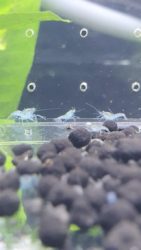
The breeding procedure is one-of-a-kind in the industry. It is common for men to climb on females to deposit sperm. Later, the female will hold on to the sperm until she can begin producing eggs for the next generation.
Whenever she’s prepared to do so, she’ll lay between 20 and 60 eggs, which she will then fertilize using the male’s sperm when he’s in the mood to do so.
Breeding dwarf crayfish is a very straightforward procedure that usually takes place without the intervention of the aquarist in the process. Maintaining a minimum of one male and one female in the tank at all times is a critical component of successful reproductive efforts.
Dwarf Crayfish Common Diseases And Their Treatment
Crayfish Plague
Crayfish Plague is a mold that causes severe illness in dwarf crawfish and other susceptible crawfishes. Although Crayfish Plague is caused by water mold, it does not threaten your other aquarium populations.
You will only have trouble if you introduce a crayfish that has already been contaminated into your tank, causing the infection to spread.
Due to the potential of the Crayfish Plague spreading, you must avoid adding wild crayfish to your already established aquarium population.
Facts About Dwarf Crayfish
- The red crayfish is the most frequent species, followed by the blue crayfish, the second most common species, and the white crayfish, the least common kind.
- There is a blue species of fish. It is referred to as a Blue Crayfish. There are also crayfish that are red and white.
- The United States is home to more than 350 species of the 500 crayfish species found across the globe.
- A crayfish may survive for up to two years in captivity if given the correct care.
- There is a kind of crayfish known as a dwarf crayfish that is very small.
- The most common crayfish grows 3-4 inches long, although they may grow much more significantly in the wild, particularly in deeper lakes.
Are Dwarf Crayfish Right For You?
When you buy a dwarf crayfish,choose ones that seem active and don’t hide in a corner of the tank immobile. If some individuals are missing a leg or two, don’t worry; their legs will grow again the next time they molt.
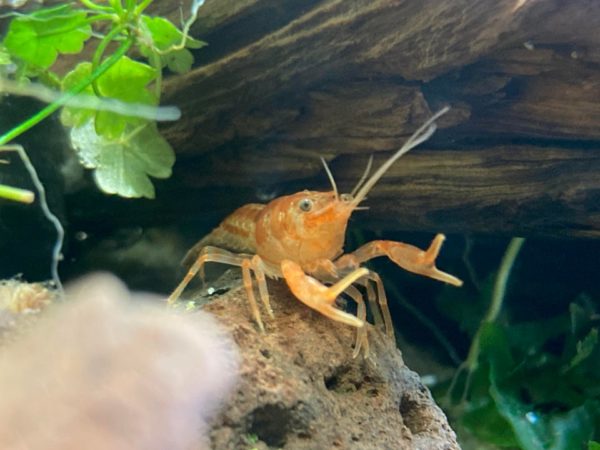
To decorate their tank,use plants and stones. You don’t have to worry about keeping more luxurious plants with them; they will have a great place to hide and will not eat them. Even more, if you have any dead plants in your tank, they will consume the dead parts for the plant to grow healthy again. Dwarf crayfish are a great addition to any aquarium!
Most of the time, these dwarf crayfish are peaceful and pleasant crustaceans that help maintain the hygiene of your aquarium. Your shared aquarium will be alive with color thanks to the presence of the Mexican Dwarf Crayfish, which has a vibrant orange coloring.
Additionally, they are interesting to maintain in the tank since they often demonstrate their courage by clicking their claws.
FAQs
Is It Possible For Dwarf Crayfish To Survive On Their Own?
Mexican Dwarf Crayfish are generally peaceful creatures, but they have personalities, so it is possible to come across as territorial or more aggressive than the others.
Can Dwarf Crayfish Live Peacefully With Bettas?
Fortunately, one dwarf crayfish and one betta fish can coexist happily in a 5-gallon aquarium (An excellent tank for dwarf crayfish and bettas is the Fluval Spec 5 Gallon).
Is It Necessary For Crayfish To Be Removed From The Water?
Crayfish need a large amount of oxygen, and under quiet water circumstances, such as those seen in a tank without a filter or airstone, they will get the oxygen they require from the surrounding air.
Conclusion
There are many different environments where dwarf crayfish may be found, such as aquariums, aquarium tanks, and ponds, to name a few examples. The wonderful thing about dwarf crayfish care is that they can thrive in a wide variety of various environments and circumstances. They do not seem to have many preferences if any at all.
No related posts.
